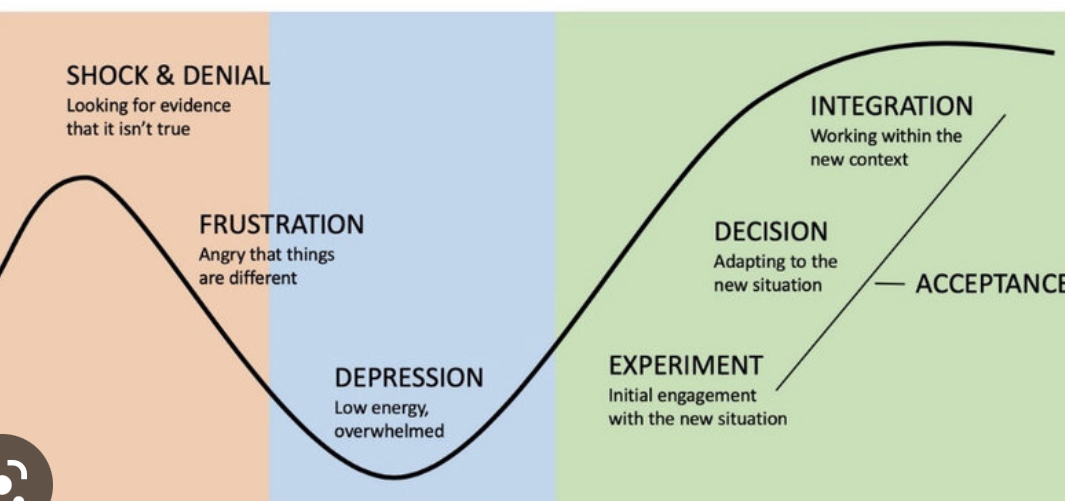The Obsolete Misunderstood Grief Model

Back in the 1960s the Kubler-Ross’s studies on the dying took place and are still falsely believed to be about those who are grieving. After examining the research, it turns out that Kubler-Ross’s work is widely misunderstood. Kubler-Ross developed the five stages of DYING, not grief. Her studies were based on people with terminal illnesses, not those who were grieving the loss of a loved one.
Grief is a response to the loss of someone or something that was important.
Before continuing reading you should ask yourself this question – would he/she want me to continue grieving their loss or would they want me to honor their memory (when they were healthy and alive)?
Often, there are two scenarios that play out when we are experiencing grief:
When we are thinking about the loss of a loved one we see in our mind’s eye consciously or unconsciously that person being far away from us physically. This causes us to no longer feel the closeness or connection that we had before the loss of this loved one.
The second scenario often involves unpleasant or traumatic memories associated with the memory of our love one’s passing.
I was grieving my mother’s death for a few weeks after she passed away with pancreatic cancer in 1994. When I thought of my mother, I repeatedly replayed this same memory. I saw her in her deathbed a few days before the ravages of cancer took her life. I was in 1st position. It was like being there again, feeling the same bad feelings that I felt then.
When I imagined my mother she was over twenty feet away from me. I then realized that in order to fully appreciate the past memories of my mother, I needed to make a changes to this and other negative memories in my mind. This is what I did:
1. For this very unpleasant memory I used this procedure on my blog:how-to-blowup-a-mildly-unpleasant-bad-memory/
This worked for me; however, some people will have to use one of the other trauma processes on this site : healing-ptsd-phobias-intense-emotional-feelings/
2. I then remembered a nice memory of us together and I stepped into that memory, I saw what I saw then through my eyes then and felt what I felt then (1st position). I did this with five more pleasant memories.
3. Also never use the observer position on a pleasant memory that you had with a deceased loved one. It will cause you to feel the terrible loss feeling (grief) rather than the good feelings you had at the time. See my earlier post: simple-technique-that-can-improve-the-quality-of-your-life/
4. Now in your mind’s eye move your love one in physical space closer to you. Now you can imagine your love one very close to you when you think of her/him.
Now when I think of my mother she is healthy and either within five feet of me or in one of those pleasant memories with me in 1st position (in my body seeing her).
This was and is my grief procedure that I have used on myself and others. I hope it works for you and brings you some peace.
BTW: Recently I have successfully used this technique called, “FreeSpotting” with two clients on their grief.
https://clintmatheny.com/a-wonderful-self-help-technique-2/
Clint77090(at) gmail.com
